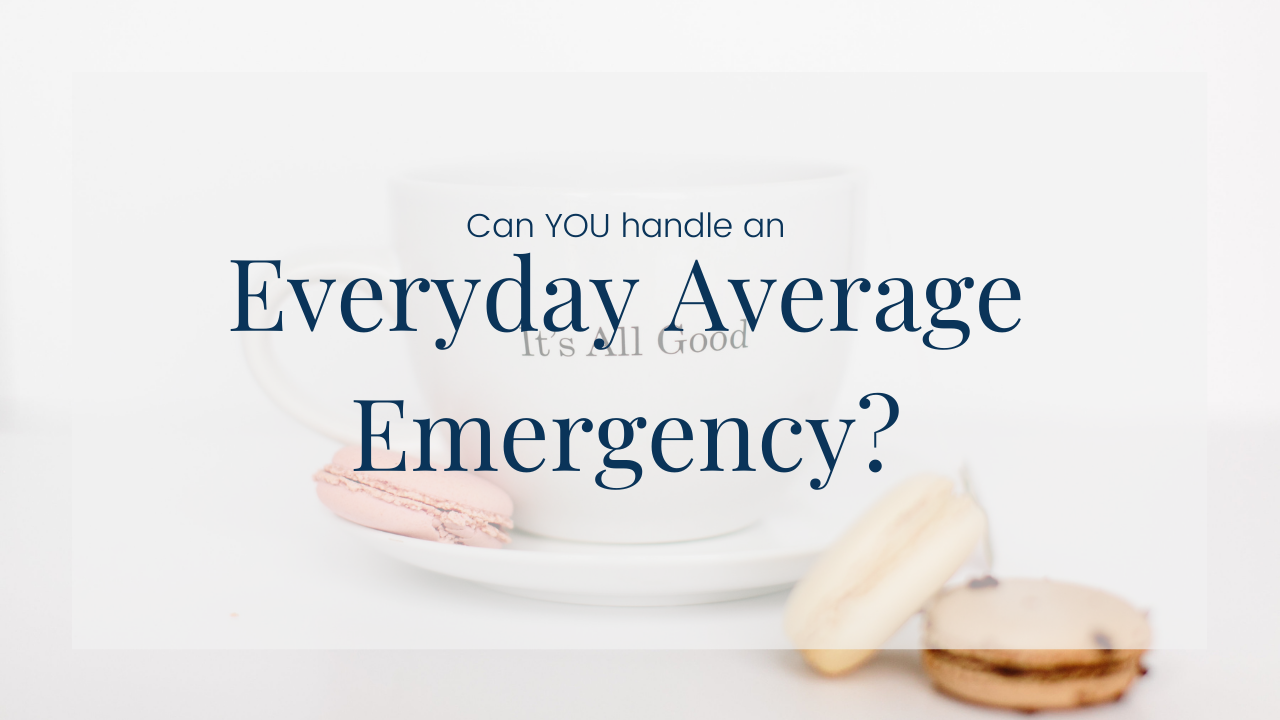Can YOU Handle an "Everyday Average Emergency"?
What if I told you that not all Emergencies were equal? That there are the BIG EMERGENCIES - losing a job, you or someone you love gets sick, you get in an accident and total your car. These are BIG and AWFUL and SCARY.
But, then, there are the...smaller....emergencies.
Emergency room visits, broken appliances, broken bones(!). These are the thing in life that still suuuuuuck, but they aren’t true emergencies.
They are what I like to refer to as “Everyday Average Emergencies” (EAE) and, In the grand scheme of things, they are really just BAD DAYS , inconvenient problems, and things or events that you get fixed as quickly, efficiently and effectively as possible in order to get back to regular, everyday life.
Well...as long as you’re prepared for them.
And getting you prepared is what today’s blog is all about! 💪 💪 💪
The “Everyday Average Emergency”
From a broken dishwasher that leaves water all over the floor to a flat tire on the way to work, an “Everyday Average Emergency” interrupts your day, possibly even your week, and typically costs anywhere from $400 to $2500 (or the equivalent in your currency).
Basically, they’re just a big freakin’ hassle. Because you have time for that!
Boo. 😕 😕 😕
So, let’s get you prepared.
Where to Save Your Everyday Average Emergency Fund?
When it comes to your emergency fund, the Everyday Average Emergency fund is sort of a “sub-fund” of your bigger emergency fund savings account.
While I recommend that you keep your big Emergency Fund in a high-yield interest account, like Marcus from Goldman Sachs or Chime, I recommend that you keep your EAE in a separate savings account that is easily accessible from your checking account.
This way, when these Bad Days happen, you can easily move the money from the Everyday Average Emergency fund savings account into your checking account, or to pay your credit card if you’re in the points game.
And bing, bam, BOOM - your Bad Day is sorted.
Having your EAE easily accessible from your checking account means that you DON’T put your “Bad Day” on a credit card, and then pay it off over time, incurring interest. Ya’ll know how I feel about interest! The only person who benefits from credit card interest is the bank!
Ermmm, no.
How MUCH to Save for Your Everyday Average Emergency Fund?
As I’ve said, an EAE is a bad day. It’s the morning when you wake up and there’s no hot water because the water heater broke overnight. The average cost of a new water heater is $400 to $1600, depending on how many gallons of water you need. But, then labor will also set you back another $600.
Or, you’re minding your own business, munching on tortilla chips and suddenly an old filling breaks and you need a dentist...like NOW.
Yes, all of these things have happened to me. 🙄 🙄 🙄
An Everyday Average Emergency typically costs between $500 and $2500. I usually recommend that you set a goal of $2,000, with $2500 as your stretch goal. Need help saving? Read this BLOG!
What To Do Next?
This blog is part of a series about Emergency Funds. My goal was to give you all the information you needed to know what an emergency fund is, how to save for one, and how to strategically set up your accounts to ensure your success!
Here are the links to the other blogs in this series:
What is an Emergency Fund?
How to Save an Emergency Fund
Do you looooove a Good HACK??? Check out my free ebook 25 Money Tips and Hacks! It’s full of easy ways to start saving a little money here and there...and none of them are to drink less lattes!
**I am not a licensed financial advisor. I am a money expert and I provide education, tips, tricks and my opinions around money. You should consult a professional who understands your needs in order to make the best decisions for you! Additionally, some links in this blog may be affiliate link, which means if you click the link and buy the product I may earn a small commission - at NO COST to You! TYIA :-)







